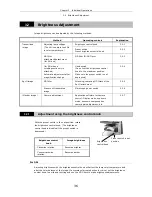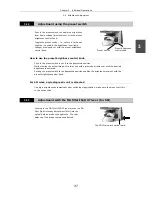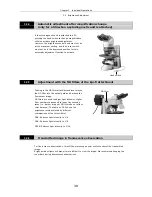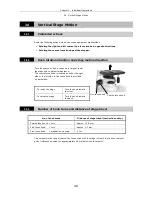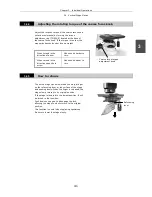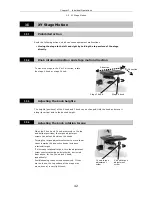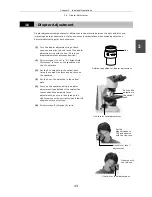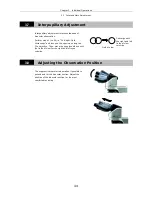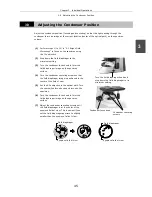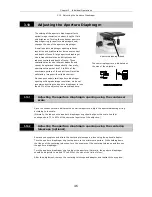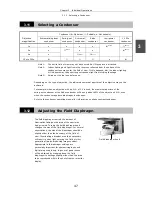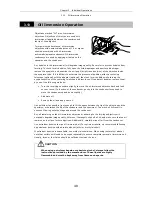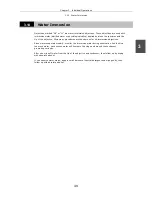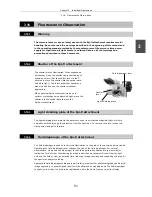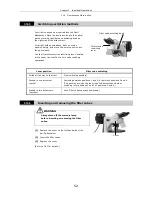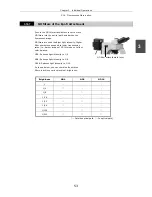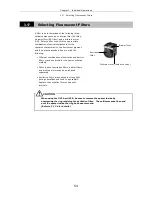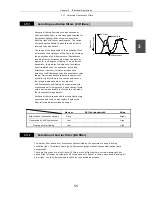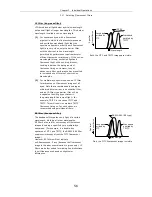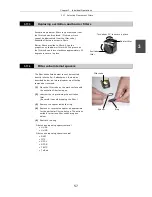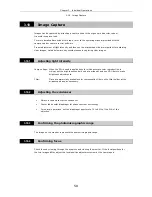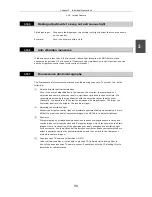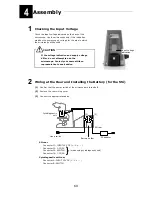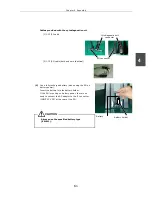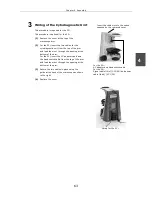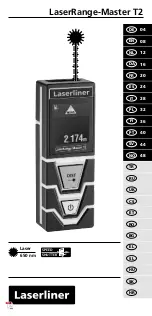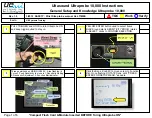
Chapter 3 Individual Operations
3.13 Oil Immersion Operation
48
3.13
Oil Immersion Operation
Objectives marked “Oil” are oil-immersion
objectives. Objectives of this type are used with
immersion oil applied between the specimen and
the tip of the objective.
For maximum performance, oil-immersion
objectives with numerical apertures of 1.0 or higher
should be combined with oil-immersion
achromatic/aplanat condensers. Oil-immersion
condensers are used by applying oil between the
specimen and the condenser.
Any bubbles in the immersion oil will degrade image quality. Be careful to prevent bubbles from
forming. To check for air bubbles, fully open the field diaphragm and aperture diaphragm,
remove the eyepiece, and examine the exit pupil (bright round section) of the objective inside
the eyepiece tube. If it is difficult to ascertain the presence of bubbles, attach a centering
telescope (optional) with the adapter (optional), then look for air bubbles while turning the
eyepiece section of the centering telescope to adjust focus. If you detect bubbles, remove them
by one of the following methods:
•
Turn the revolving nosepiece slightly to move the oil-immersed objective back and forth
once or twice. (In the case of the condenser, gently turn the condenser focus knob to
move the condenser up and down slightly.)
•
Add more oil.
•
Remove the oil and apply new oil.
Use as little oil as possible (just enough to fill the space between the tip of the objective and the
specimen, or between the tip of the condenser and the specimen). Too much oil will result in
excess oil flowing onto the stage and around the condenser.
Any oil remaining on the oil-immersion objective or adhering to the dry-type objective will
noticeably degrade image quality. After use, thoroughly wipe off all oil, and make sure that no oil
remains on the tips of other objectives. Additionally, carefully wipe off oil from the condenser.
Use petroleum benzine to wipe off immersion oil. For optimum results, we recommend following
up petroleum benzine with absolute alcohol (ethyl or methyl alcohol).
If petroleum benzine is unavailable, use methyl alcohol alone. When using just methyl alcohol,
note that surfaces will need to be wiped repeatedly to ensure complete removal of immersion oil.
Usually, three or four times should be sufficient to clean the lens.
When using petroleum benzine or absolute alcohol, always follow the
instructions provided by the manufacturer. These liquids are highly
flammable and must be kept away from flames and sparks.
CAUTION



